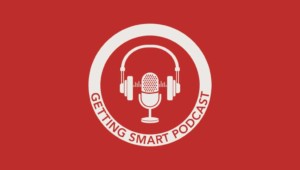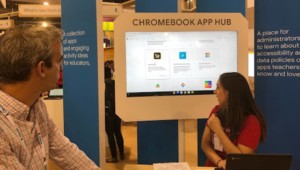Jaime Casap: Ed Evangelist, Google Apps for Education
Q&A with Jaime Casap
It seems the time has come to advocate and create action strategies for digital learning in American education. What are you going to be doing personally to see this change move forward?
Google Apps for Education is a suite of tools that can help build skills kids need for the 21st Century. Google is working with a number of states, school districts, NGOs, and partners to help bring our technology tools into the classroom. We have been talking about bringing technology into the classroom for the last 30 years and we have made some good progress in many areas. Today however, kids are growing up with these tools in their hands and are walking into the classroom with the ability to use them. We need to make sure there is a sync between what kids are doing in their personal lives and in their school work. They need to see how they can use the same technology tools to learn and improve their understanding of how things work!
Why did you decide to join the Digital Learning Council?
This is a tremendous opportunity to brainstorm and come up with a list of recommendations to help propel technology in the classroom. The folks on this council are some of our best thought leaders, not only on education, but on how to help make technology as important in the classroom as desks and chairs. I’m very excited and lucky to be part of this group. I am sure we will all push each other out of our comfort zones and I believe this group can take giant steps to make technology in education an everyday reality.
How will the DLC make positive impacts on policy shaping? Where can we make the most impact?
I have this saying I use in my presentations that help folks think about the relationship between education, technology, and policy. I like to say that we don’t ban cars from our roads, we teach kids how to cross the street. This council can help define the importance of technology in education and come up with recommendations that can help shape education technology policy for years to come.
For potential outside partners who may want to assist the DLC , what kind of help would be most useful?
These recommendations cannot be created or rolled out in a vacuum. The council must partner with the whole complete spectrum of education, from making sure we have the voice of the teacher, to the voice of the access provider. We need to identify stakeholder and give them an opportunity to help shape our recommendations. They are the ones who are in the best position to help roll out the recommendations.
What do you think of social media as a teaching tool?
Kids don’t understand what “social media” means. They use their social media the way we used the TV. The TV was just there, just like “social media” is just there for kids today. Fundamentally, social media is about being connected and being connected to people across your classroom, across your school, across your city, across your country, and around the world has possibilities we haven’t begun to understand yet. When I was in school, my research was done at the library and came out of books that were 20 years old. Social media gives kids the opportunity to collaborate on a research project with kids all over the world.




Dr. Jason Jimenez
Hello Mr. Casap,
My name is Dr. Jason Jimenez and I have been reading many articles describing your vision. I'm currently a principal of a Charter School that interrogates Google products in our School. We use everything from Google Calender, Google Site, Google Docs and of course email.
To tell you a little about our school, Inland Leaders Charter School (ILCS) is a transition kindergarten through 8th grade site-based elementary school located in Yucaipa (U-KI-PU), California. ILCS is currently in its fourth year of operation and is comprised of 660 students. We hold to high expectations for student achievement and parental involvement and just received a state API of 896 in our fourth year. The school prides itself in five core elements: results, leadership, small schools, individualized instruction and putting families first. These elements drive the school vision, actions and life at ILCS. Inland Leaders motto, Beyond the Limits, describes the school's desire to move beyond the typical school environment and deliver education that is far beyond anything experienced before. The vision of Inland Leaders is to sustain a high quality community charter school founded upon innovative instruction and character education to create 21st century leaders. It would be an honor and a privilege to give you a tour of ILCS.
Sincerely,
Jay